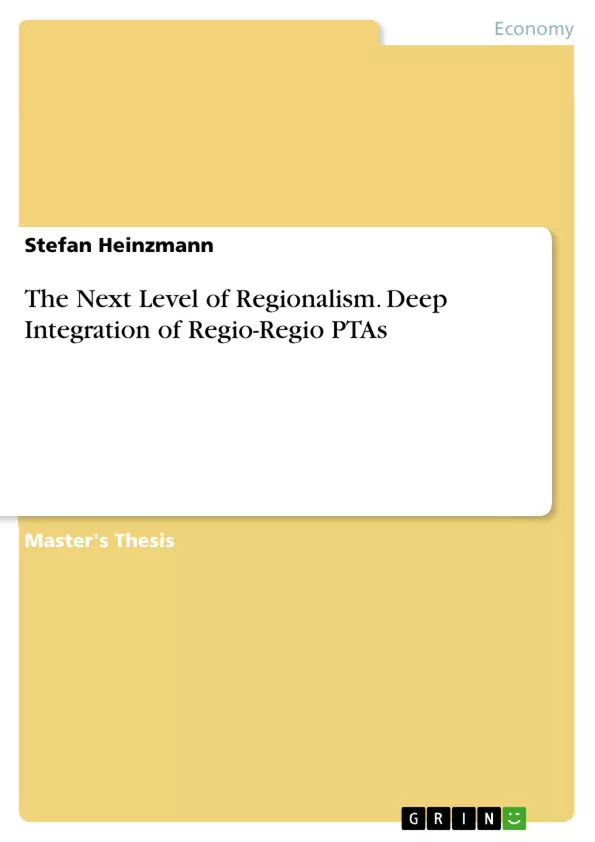This thesis breaks down the reason for deep economic integration to two main structures: trade asymmetry and actorness.
The data for trade asymmetry and actorness were gathered for 10 dyads of regional organizations or groups of countries that trade with each other.
These data form the base of a QCA model that brings the result that actorness and asymmetry both are sufficient for a deep integration among the trade relations of regional organizations.
Inhaltsverzeichnis (Table of Contents)
- Introduction...
- Problem........
- Goal of the Thesis...........
- Methodology..\nLiterature...
- Asymmetries and Power
- Actorness in Interregionalism........
- Types of Interregional Relations.
- Institutionalization.........
- Methodology.
- Qualitative Comparative Analysis...
- Fuzzy-Set QCA.............
- Operationalization of Depth
- Sample and Case Selection........
- Methodology for the case study.....
- The Empirical Chapter......
- Measurement of the Conditions..
- Condition 1: Asymmetric Power....
- Condition 2: Actorness ...
- Results of the QCA-Model.
- Fuzzy-set membership and calibration.….......
- Tests for Necessity and Sufficiency - transformational calibration ………………………….
- Tests for direct calibration
- Assessment of the Results.
- Case Study: The EFTA-Central America PTA.
- Future PTAs: A short prognosis.
Zielsetzung und Themenschwerpunkte (Objectives and Key Themes)
The text explores the growing trend of regional preferential trade agreements (PTAs) and investigates the conditions that influence their depth and institutionalization. It aims to understand the role of asymmetric power and regional actorness in shaping interregional relations and the development of these agreements.
- The rising trend of Regio-Regio-PTAs and their increasing scope beyond customs issues.
- The influence of power asymmetries between regions on the depth of interregional relations.
- The role of regional actorness in shaping interregional cooperation and the formation of PTAs.
- The application of Qualitative Comparative Analysis (QCA) to analyze the factors contributing to PTA depth and institutionalization.
- The case study of the EFTA-Central America PTA to illustrate the theoretical framework and provide empirical evidence.
Zusammenfassung der Kapitel (Chapter Summaries)
- Introduction: Introduces the growing trend of regional PTAs and the debate surrounding free trade. It highlights the increasing prevalence of Regio-Regio-PTAs and the need to understand their dynamics.
- Asymmetries and Power: Discusses the concept of actorness in interregional relations and its connection to power asymmetries between regions. It examines various types of interregional relations and explores the role of institutionalization in shaping these relations.
- Methodology: Outlines the methodological framework used in the study, including Qualitative Comparative Analysis (QCA) and fuzzy-set QCA. It explains the operationalization of depth and the process of case selection.
- The Empirical Chapter: Presents the empirical findings of the study, focusing on the measurement of conditions such as asymmetric power and actorness. It analyzes the results of the QCA model and assesses their implications.
Schlüsselwörter (Keywords)
The text focuses on the concepts of interregionalism, preferential trade agreements (PTAs), Regio-Regio-PTAs, power asymmetries, regional actorness, depth of integration, institutionalization, Qualitative Comparative Analysis (QCA), fuzzy-set QCA, and case study analysis.
- Quote paper
- Stefan Heinzmann (Author), 2018, The Next Level of Regionalism. Deep Integration of Regio-Regio PTAs, Munich, GRIN Verlag, https://www.grin.com/document/449744



